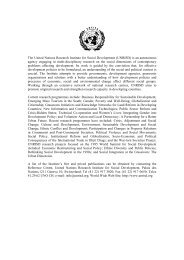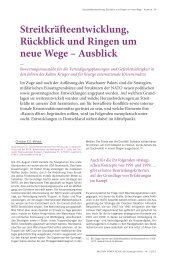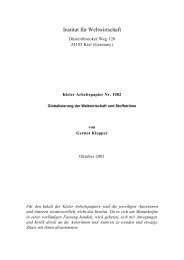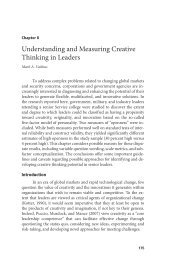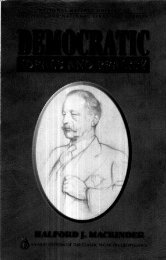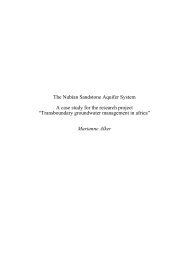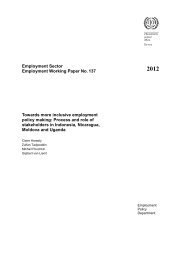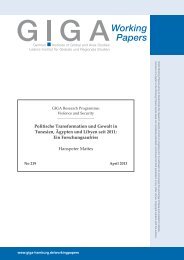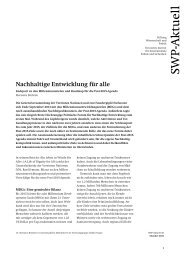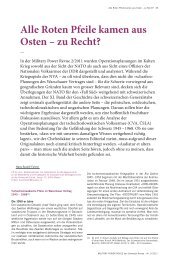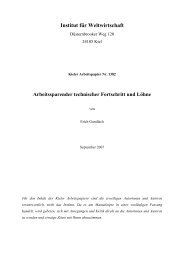Global Jihad: temi, piste di diffusione e il fenomeno del reducismo ...
Global Jihad: temi, piste di diffusione e il fenomeno del reducismo ...
Global Jihad: temi, piste di diffusione e il fenomeno del reducismo ...
Create successful ePaper yourself
Turn your PDF publications into a flip-book with our unique Google optimized e-Paper software.
ut the Afghan scene. Wh<strong>il</strong>e visiting the United States in 1988, in order to recruit<br />
American Muslims for the fight in Afghanistan, Azzam described the Afghan<br />
mujahed<strong>di</strong>n as the sublime mo<strong>del</strong> of Islamic fighters who would lead the Muslim<br />
world toward a kind of eternal struggle against the ev<strong>il</strong> powers of Western culture. 45<br />
Another important element in the theory of al-Qa’ida was the sense of elitism that<br />
characterized this vanguard army. This elitism was spurred by two branches of Islam<br />
that had developed in Egypt and Sau<strong>di</strong> Arabia long before—Takfir (refutation) and<br />
ra<strong>di</strong>cal Wahhabism. Many of the mujahed<strong>di</strong>n in Afghanistan and later on in Iraq—<br />
especially those who came from other countries, either as ex<strong>il</strong>es or on a voluntary<br />
basis—adopted the Takfir principles of creating an isolated society of true Muslims<br />
and waging jihad against the rest. They also seized upon the extreme brand of<br />
Wahhabism practiced in the 1930s by the Wahhabi Ikhwan zealots, who settled on<br />
the borders of the new Sau<strong>di</strong> Arabian kingdom and developed ra<strong>di</strong>cal ideas that<br />
were counter to the rest of their society. Accor<strong>di</strong>ng to Abdallah Azzam the only way<br />
to consolidate all of these ideas was through protracted jihad. As Omar Abu Omar<br />
put it in, “The only legitimate state that could represent the correct nature of Islam<br />
and rely on its essence, is the state that would be established through the armed<br />
struggle of jihad”. 46<br />
Azzam’s “Solid base” article is sim<strong>il</strong>ar to others published in the late 1970s and early<br />
1980s in two Islamic magazines—Al-Mukhtar al-Islami [The Islamic assortment] in<br />
Cairo and Al-Tali`ah al-Islamiyyah [The Islamic Vanguard] in London. The lea<strong>di</strong>ng<br />
e<strong>di</strong>tors of these magazines were Dr. Fathi Shqaqi and Dr. Bashir Nafi` (who used the<br />
name of Ahmad Sa<strong>di</strong>q), the co-founders of the Palestinian Islamic <strong>Jihad</strong>. Wh<strong>il</strong>e<br />
studying me<strong>di</strong>cine in Egypt, they were in close contact with the founders of the<br />
Egyptian Islamic <strong>Jihad</strong> and the Egyptian Islamic Groups (Al-Gama`at al-Islamiyyah) 47 .<br />
Initially, Shqaqi and Nafi` tended to focus on the Palestinian issue, as opposed to<br />
45 Exerpts from Azzam’s presentations in American mosques can be viewed in Steve Emerson’s 1994 PBS<br />
documentary, <strong>Jihad</strong> in America.<br />
46 Omar Abu Omar “Abu Qatadah”, Al-<strong>Jihad</strong> wal-Ijtihad, p. 58.<br />
47 On the relations between the Palestinian and Egyptian <strong>Jihad</strong> groups, see: Anwar Abd al-Ha<strong>di</strong> Abu Taha,<br />
Harakat al-<strong>Jihad</strong> al-Islami fi F<strong>il</strong>astin, chapter 2, on the official web site of Palestinian Islamic <strong>Jihad</strong>:<br />
www.qudsway.com/Links/Jehad/4/Html_Jehad4/<strong>Jihad</strong>bolkhtml/4hje1-3.htm<br />
64





